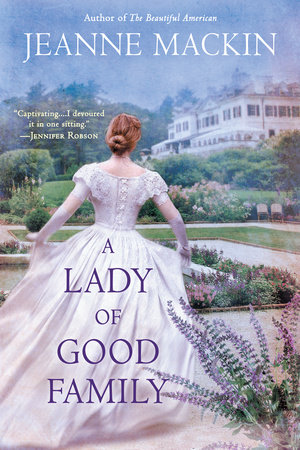A Lady of Good Family Reader’s Guide
By Jeanne Mackin


1. Did you enjoy the novel? What was your overall response to it?
2. Although the novel is primarily about historical figure Beatrix Farrand, fictional Daisy Winters tells the story. Did you find Daisy an effective narrator? What are the advantages and disadvantages of hearing the story from her point of view?
3. Discuss what life was like for Beatrix as an upper-class woman coming of age before 1900. What restrictions did she face early on that began to fall away as the new century progressed?
4. Beatrix and Amerigo first meet by chance several times, which seems to suggest that fate is conspiring to draw them together. Have you ever had a similar experience of a romance that seems “meant to be”?
5. Discuss the references to novels by Henry James and Edith Wharton. Are you familiar with Daisy Miller, The Turn of the Screw, and The House of Mirth? Are you inspired to seek them out and read them?
6. The author suggests that falling in love was an important part of Beatrix’s growth both as a woman and as a professional landscape gardener. How does the experience enrich her? Do you agree that an experience of passionate, romantic love is essential for a woman’s fulfillment?
7. Why does Beatrix hesitate when Amerigo suggests they elope? Have you ever had to make a split-second decision with far-reaching consequences for your life? What did you choose?
8. There are happy and unhappy marriages in the novel. Discuss the ingredients that go into making each marriage successful or disastrous. How much freedom to choose do the couples really have, and how much is driven by social convention? What role does luck play? And how do the marriages in the novel compare to marriages you know now?
9. Discuss the various ghosts in the novel. Why do you think the author includes them? Does the epigraph, taken from Beatrix Farrand’s writing, provide a clue?
10. Discuss the many cruelties Mrs. Haskett inflicts and the possessions she accumulates in an effort to gain entrée into New York society’s highest echelons. Does she remind you of anyone from history, literature, or today’s pop culture?
11. Why do you think the author includes the three descriptions of gardens—for first meetings, second chances, and “where no one can weep”?
12. Does the novel make you want to create a garden, visit a garden, or read about gardens?
13. Before reading the novel, had you ever heard of Beatrix Farrand? Consider making a list of accomplished women of the last one hundred and fifty years that most people have never heard of.
14. Did you find the end of the novel satisfying? Why or why not?
Just for joining you’ll get personalized recommendations on your dashboard daily and features only for members.
Find Out More Join Now Sign In